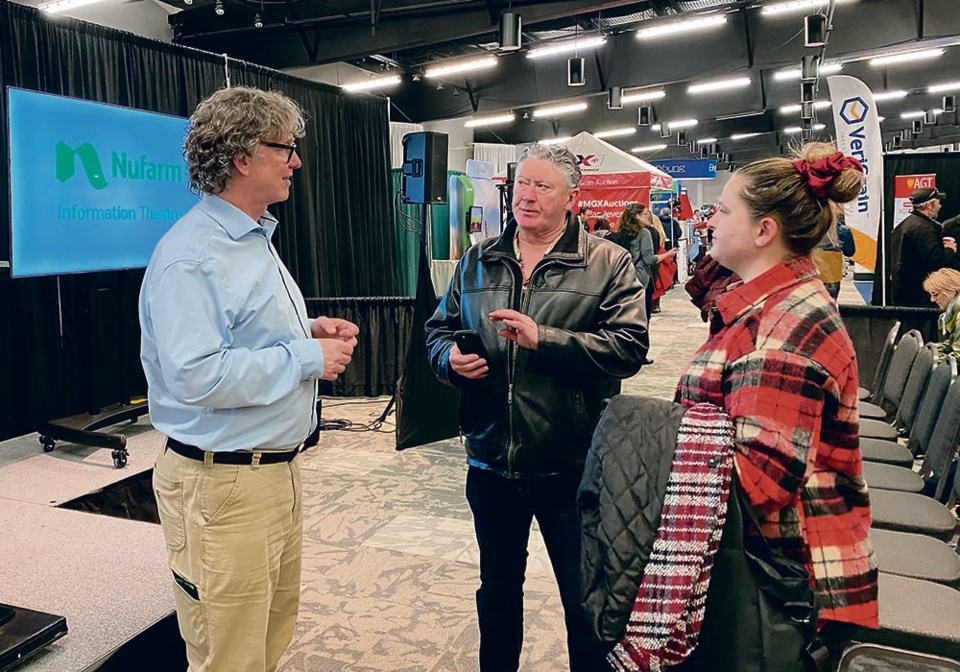SASKATOON — Information is power, and by putting that power into farmers’ hands, Steve Shirtliffe wants to help Western Canada continue its record of world-leading innovation.
“My vision is that we build a digital agriculture economy here in Saskatchewan,” he said. “
We’ve done it before. Where did no till come from? Where did people learn to weld and then in workshops in wintertime build weird seeders so they could seed into stubble and start companies and essentially establish a technology that’s used the world over? Right here, right?”
Shirtliffe is a researcher and professor at the University of Saskatchewan. An agrologist, he specializes in using remote sensing imagery such as that from drones and satellites to create detailed, information-rich maps of farmland. They include details on cropping history, weed intensity, disease prevalence and salinity.
In his presentation at the Crop Production Show in Saskatoon in January, he explained that the idea is to leverage information to help farmers inform their decisions on what to plant and how to most profitably manage their lands.
An early example is the anaphomyces risk evaluation app (AREA). This free online tool uses historical cropping data to determine likely disease pressure on a given piece of land.
One project Shirtliffe and his colleagues are just starting could help farmers decide whether to invest in precision agriculture.
“We’re going to do wall-to-wall mapping of Western Canada at the 10-metre pixel level,” he said. “We’re going to create essentially a digital twin of agriculture in Western Canada.”
This level of resolution will identify yield variability within fields. Those with low variability, say 10 percent, are likely fine managed the way they are. Those with high variability, perhaps 50 percent, could be good candidates for precision agriculture.
Much of the data for these efforts is publicly available from various satellites in orbit and some is already being used to create a window on agriculture. Agriculture Canada’s vegetation index maps, for example, use satellite images to estimate how green, dense and healthy vegetation is.
Shirtliffe credits the technical expertise on his research team for taking the data further with sophisticated algorithms and machine learning tools.
He has big things in mind. His big goal, as he calls it, is something he said will likely keep him busy long after his colleagues have hung up their hats and retired.
ADVERTISEMENT
“I’ve got a big job in front of me,” he said.
“What I want to do is to start to be able to predict relative yield on every field in Western Canada.”
The goal is to identify marginal areas within fields to help farmers better manage their lands, for example by seeding these areas to forages or by changing up inputs to optimize yield and input costs. An important aspect of this is to identify areas that deliver no profit or even cost the farmer money.
Shirtliffe and his colleagues are working on focal areas within 14 million acres of western Canadian farmland. The first step, now underway, is to recruit farmers to contribute their actual yield data that can be used to train the machine learning algorithms. He stresses these data are amalgamated and anonymous and will not be published. Plus, farmers receive reports specific to their land.
“You know how, often, researchers ask you to do something and then don’t even tell you what the results are on your farm? That’s terrible, isn’t it?” Shirtliffe said.
“If you take part in this, you actually get a report back and we will give you a yield distribution of your profit on your farm and then identify what proportion of your land was not unprofitable.”
About 60 farmers have signed onto the project, and Shirtliffe brought up actual examples sown to wheat and some canola. One showed zero yield and negative profit on several areas, likely due to drought, while another showed good productivity across the board, with no marginal areas to worry about.
Zooming out to look at a bigger picture, Shirtliffe said they didn’t identify a lot of marginal land, but clearly mapping land in terms of profitability can inform farmer decisions.
“The idea is that this is probably land that would be better off… well if you’re losing money on it, it probably could be better in something else.”
Shirtliffe said access to this rich information base also puts farmers in a better position to take advantage of conservation funding, whether they be from private groups such as Ducks Unlimited or provincial and federal governments. It is also another arrow in the quiver to pin down elusive carbon funding.
“Of course, that has huge potential for helping agriculture meet its carbon goals,” Shirtliffe said.
“I know we don’t want to be there, but if we’re stuck there, let’s hope we get paid for doing something right instead of just having a finger waved at us.”




